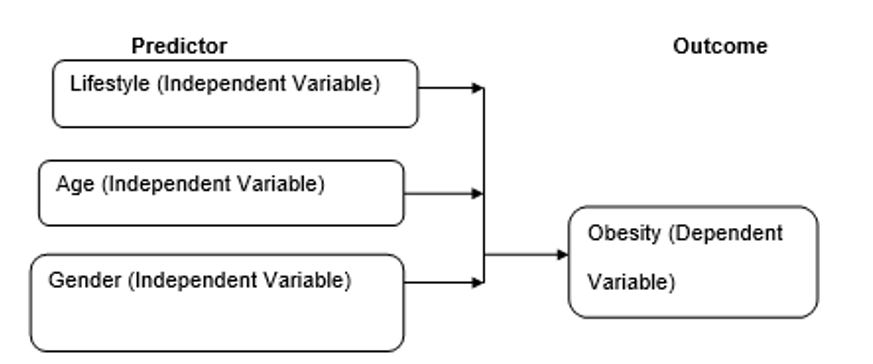Extraneous variables
Obesity is a serious health issue affecting many people globally. In trying to understand the prevalence of the condition in the modern society, launching a qualitative research would be appropriate. Therefore, the suggested study will utilize the case study research design since it is useful in investigating the new social trends. The method is qualitative because it calls on the researcher to analyze various available resources in detail as opposed to employing simple statistical surveys (Gerring, 2005). The sampling technique to be employed will be random and will involve obese adults in the Miami Community that assist in three clinics. There will be an approximate 250 participants. The sampling criteria will include individuals older than 40 years, suffering from obesity, as well as their caregivers. In addition, there will be individuals suffering from other diseases and those only suffering from obesity.
Specifically, the study will establish the demographic variances between obesity and factors such as lifestyle, age, and gender in order to ascertain the recent trend in this illness. This is summarized in the table below.

Instruments: Description, validity, reliability
Validity and reliability determine the accuracy of collecting data in research. In order to achieve validity in the questions presented in the questionnaire, it is essential to carry out question pre-testing. The mixture of questionnaire and direct interview will present a number of pre-specified competencies and best practices based on findings from a review of literature, and participants will be asked to indicate which of the practices they use or rely on most. Some items may be listed for comparison and respondents asked to rate them in terms of frequency of use in order to gather their relative importance (Mason, 2005). Some basic information will be requested to identify demographic characteristics of the sample and to confirm eligibility of respondents with respect to meeting criteria for participation.
Description of intervention
If a researcher was to study the topic of obesity in general, it would take him or her years to conclude the results. Hence the use of case study allows narrowing down to specific issues related to the perceptions of people towards obesity in society. However, it has to be mentioned at this stage that case study method does not answer the research question fully. Nevertheless, it helps in giving indications that allow further research and hypothesis development within the general topic on obesity (Gary, 2011). While some argue that results generated through the case study method are complex, such data may be vital in tracking realistic responses. While going through various resources, the researcher will engage in thorough and systematic note taking. One of the factors that influenced this choice is the fact that the researcher is trying to isolate a small study population. The study design will be descriptive in the sense that the case study allows for undertaking a descriptive study.
Data collection procedure
The mixture of questionnaire and direct interview will present a number of pre-specified competencies and best practices based on the research topic as part of qualitative research (Mason, 2005). Moreover, this approach will create room for further analysis using different and divergent tools for checking the degree of error and assumption limits in examining the social trends in obesity.
Data Analysis Plan
The collected qualitative data will be coded and passed through appropriate analysis tool. In the process, cross tabulation will be used to compare and contrast the impressions held by the respondents on the state of obesity. In order to quantify the relationship between the independent and dependent variable, analysis will be essential besides figures, charts, and tabular representation of correlation analysis.
Data analysis plan for demographic variables
The first stage is the identification of the level of significance to highlight variances in the demographic variables by using the T-test tool. This test allows the researcher to answer questions created on demographic variables such as age and gender. The T-test helps to clarify if groups chosen for analysis can be statistically different from each other or not. This analysis helps to compare the variance of different groups. Besides, the researcher will rely on the method of qualitative data analysis called SPSS. With the help of this method, it is possible not only to test the hypothesis but also create an inference to understand the facts gathered (De-Rada, 2005).
Data analysis plan for study variables
The research study separates two variables in the research on obesity. To evaluate the impact of lifestyle differences and obesity trends, the study proposed ANOVA analysis on 250-sample populations. ANOVA (analysis of variance) is focused on substantiating the variances of different means of data sets. This statistical analysis methodology dwells on disintegrating the variances that exist between data sets from different sets of data. In this study, ANOVA analysis will establish the statistical variance between sets of data gathered from different study variables and obesity trends (Mason, 2005).
References
De-Rada, V. (2005). Influences of questionnaire design on response to mail surveys. International Journal of Social Research Methodology, 8(1), 61-78.
Gary, T. (2011). How to do your case study: A guide for students and researchers. Thousand Oaks, CA: Sage.
Gerring, J. (2005). Case study research. New York, NY: Cambridge University Press, 2005.
Mason, J. (2005). Designing qualitative research. London, UK: Sage.